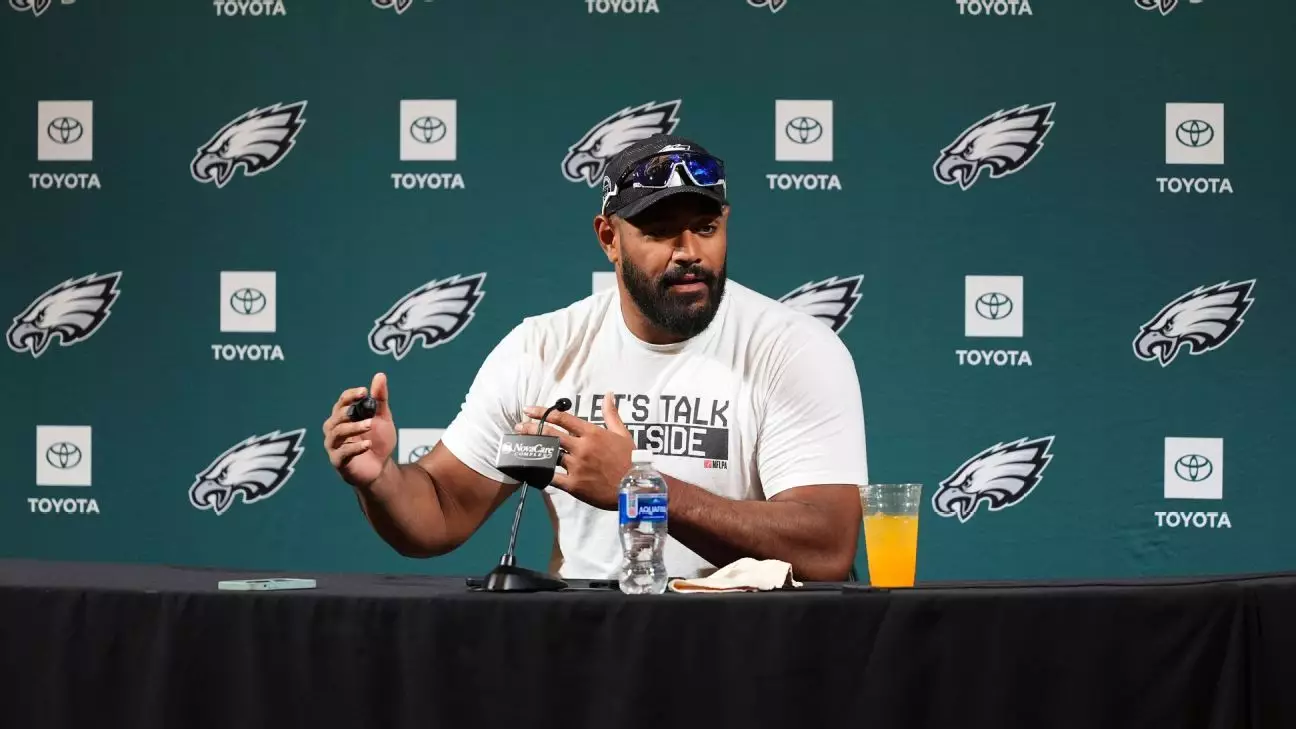In the realm of professional football, few things ignite debate and discussion like the strategic maneuvers that define a team’s offensive game plan. The much-discussed “tush push” maneuver, predominantly utilized by the Philadelphia Eagles in recent years, is at the heart of an ongoing debate among NFL owners and fans alike. Characterized by teammates pushing the quarterback forward during short-yardage situations, this play has proven exceptionally effective for the Eagles, prompting many to scrutinize its legality and fairness.
The concept of the tush push isn’t fundamentally new; however, its rise in popularity calls into question the ethics of pushing or pulling the ball carrier. At its essence, the play relies on the teamwork and sheer physical power of players, particularly the agile quarterback Jalen Hurts and a formidable offensive line. Nevertheless, the recent calls from teams like the Green Bay Packers to ban this method highlight a friction within the league over tactics that seemingly give one squad an edge over others.
Player Perspectives: Why Worry About the Tush Push?
When discussing the potential ban of this controversial play, key players from the Eagles have offered dismissive responses, suggesting their focus should stay firmly on performance rather than rule changes. Star wide receiver A.J. Brown downplayed the importance of the play, stating, “It’s only 1 yard.” This reflects a broader sentiment among team members, revealing a certain confidence in their adaptability regardless of how the NFL legislates play methodology.
Left tackle Jordan Mailata echoed similar thoughts, even humorously criticizing the term “tush push” itself. His light-hearted dismissal illustrates a mindset common among elite athletes: the ability to remain unphased by external changes. While the NFL grapples with regulating a play deemed unfair by some, the Eagles appear committed to enhancing their existing offensive schemes, focusing on their overall game rather than getting caught up in the minutiae of rule changes.
The NFL’s Governance Dynamics: A Play’s Fate in Limbo
The NFL is no stranger to debates over tactical play; however, the controversy surrounding the tush push is unique in that it encapsulates a broader struggle over competitive integrity. Coach Nick Sirianni highlighted the absurdity inherent in banning a successful play simply because it gives a competitive edge to a few teams. His assertion that the play’s effectiveness isn’t inherently unfair resonates with many fans who appreciate the tactical chess match that football embodies.
Importantly, the NFL’s governance dynamics reveal an ongoing tug-of-war between innovation and tradition, where owners are increasingly inclined to stifle successful strategies rather than letting them become entrenched. This situation raises pressing questions: Should football be about leveling the playing field by stifling unique strategies? Or is embracing such tactics essential for evolution within the sport?
Statistics Speak: Understanding the Impact of the Tush Push
An also noteworthy aspect of this discussion is the statistics that illuminate the tush push’s impact on overall gameplay. Data reveals that the Eagles and the Buffalo Bills have been by far the most proficient users of this technique, covering 163 successful attempts in the past three seasons. The astonishing success rate of 87% for achieving either a touchdown or first down on these attempts further cements the effectiveness of the maneuver.
While proponents of banning the play argue that it skews competition, nuanced analysis suggests that the ability to execute such a strategy lies in the quality of the team executing it. The Eagles’ physical prowess should not diminish the strategic ingenuity behind their execution of the play.
Ultimately, the great tush push debate encapsulates the fundamental tensions within professional football: between remaining competitive and allowing space for individual creativity. As the Spring Meeting approaches, the tension between maintaining traditional football values and adapting to new strategies continues to stir passionate conversations among teams, players, and fans alike.
This ongoing dialogue surrounding the tush push serves as a microcosm of football’s evolution, prompting an examination of what it means to compete and innovate in a sport defined by ever-changing tactics and strategies. As teams like the Eagles continue to push the envelope, the questions are set to linger: Where do we draw the line in the evolution of football? And who truly benefits from such tactical regulations?

